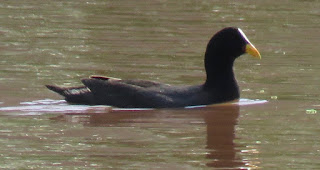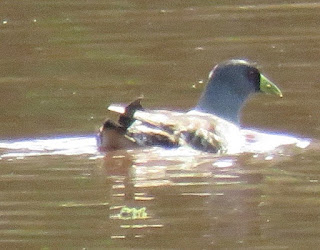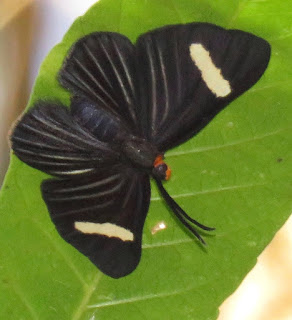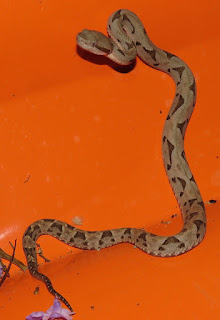I had just one night back at home in Arizona and made my way to Bolivia for two back-to-back trips. These photos are from the first tour that starts in Santa Cruz and ends in Cochabamba, covering a wonderful variety of habitats.
On our first
day we drove south on the highway to Argentina, making it as far as Camiri. We
made several stops for birds, including these Ringed Teal and Brazilian Teal in
a roadside farm pond.
At our
breakfast stop on a traffic-free side road, I noticed this Brown Vine Snake, Oxybelis
aeneus, not quite motionless on the side of the road. Watch the video here: https://youtu.be/RUfGhG6yIuQ.
There are
lots of Chaco specialties on our birding hit list, top among them this
Black-legged Seriema. We actually saw our first ones in a corn field before we
got to Camiri, but the back roads south of there have to be the one of the best
places for this super cool bird.
We had a stellar
morning for water birds on our day in the Lagunillas area lakes and wetlands.
Red-fronted Coot is a major rarity in Bolivia.
There aren’t
many records of Spot-flanked Gallinule for the country either.
We saw quite
a few Silver Teal as well, a scarce bird in Bolivia and a lifer for me.
Our next
stop was Refugio Los Volcanes, boasting a transition habitat between Amazonian
rainforest, moist Andean foothills, and the seasonally very dry intermontane
Valle Zone unique to Bolivia. This
metalmark appears to be the widespread but rarely photographed Pheles atricolor.
We took a
short night walk just down the driveway from our rooms finding this Red-rimmed
Monkey Treefrog, Phyllomedusa boliviana.
Another
exciting find was this young lancehead on some rather unattractive
construction material for a background, but I wasn’t about to pick it up to
relocate it, and I didn’t have a snake hook. This snake was an undescribed species
when we saw it, but just this past week the paper was published giving it a new
name: Bothrops monsignifer.
We stopped
for lunch at Luna Verde in Samaipata, a surprisingly civilized small town in
the Bolivian Valle Zone.
One of the
main birds to look for in these dry valleys is Red-fronted Macaw, one of the
world’s rarest and most beautiful parrots.
Another
target here is Bolivian Earthcreeper, which is easier to find in several
locations with the right habitat, including washes with dense patches of terrestrial
bromeliads. One such spot had water in the stream, which is where we found this
fantastic dancer damselfly, Argia
joergenseni.
Then just
over halfway through the tour my second camera battery ran out of juice, and I
discovered that I had forgotten to bring one of the six or seven rechargers I
have back at home. I still managed a few photos with my iPhone 8 plus, but they
weren’t as good as with my Canon PowerShot SX60 HS. Higher into the Andean cloud
forest we made a birding stop for the endemic Black-hooded Sunbeam and I
spotted this passionflower Passiflora
pilosicorona.
The final
birding of the tour is in the higher Andes near Cochabamba. This lizard Liolaemus lenzi, was out sunning in the
rocks on Cerro Tunari at 14484 feet elevation. That’s just higher than any of
Colorado’s famous 14,000+ peaks (where you won’t find any lizards), and there
were still mountains towering over us.



















No comments:
Post a Comment